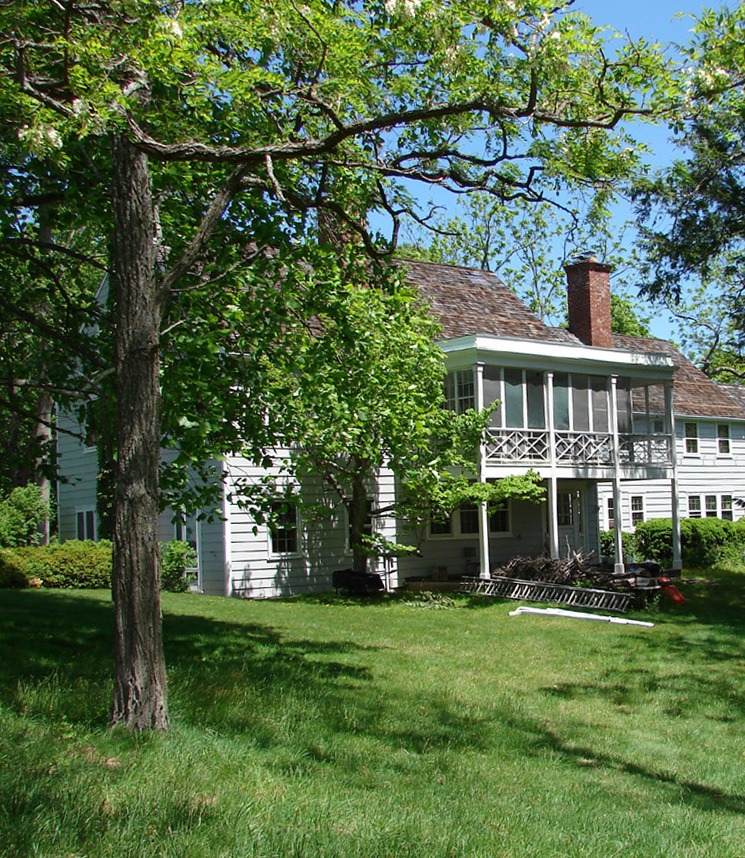This afternoon I heard on public radio (Faith Middleton Show) that health problems from indoor air pollution are worst in the most energy efficient, air-tight homes (LEED- certified). I also heard that on average Americans spend less than 95% of their waking day indoors. The Yale PHD interviewed praised his own leaky windows, for the healthy outdoor air they let into his house. (Research was done by Environment and Human Health, Inc. )
This is a very real problem, a major contributor to childhood asthma. I have heard that it can be addressed without squandering energy by systems of ventilation that include heat exchangers – and by choosing building and decorating materials for minimal off-gassing- like wool rugs – or straw mats, rather than synthetic carpet with backings and adhesives that generate unhealthy gasses. It would be great for sustainable farmers to have a stronger market for sheep wool! Faith Middleton pointed out that better labeling of materials is needed, so that homeowners and contractors can make informed choices.
If structural changes are not possible in the short term, it helps to periodically open multiple windows to air the house, on warmer days in winter, and to spend more time outdoors. My mother did not give me and my siblings a choice; we were sent outside to play and did indeed find interesting things to do. A diverse natural environment with some wildlife, insect life, and wildflowers will hold your childrens’ interest longer! Obviously we breath fresh air while hiking and walking the dog.
Consider also that time spent working in the yard, is time breathing healthier air- typically also with less dust and mold spores than indoor air. Pulling out lawn weeds, trimming bushes and raking weeds by hand is more time consuming than using power -tools. It seems to me that the yard would be more inviting to many adults, with greater variety of plantings – and self-seeded plants – native and non-native, to keep track of and tend. My husband is not a trained horticulturalist or ecologist, but enjoys spending time outside with me, following my lead, and listening and learning as I point things out. He now is able to recognize and mow around attractive native perennials – like buttercups and daisies – that crop up in the lawn, even before they bloom!
The outdoors is also more welcoming in summer, if indoor and outdoor temperatures are similar. At our house in Cheshire, Connecticut, in lieu of air conditioning, we use airflow drafts though open windows and screened doors, and shade from an “umbrella” catalpa tree (pruned each fall) on the south side of the house. Our extended family’s vacation house on Long Island is shaded to the south by two large hemlocks. It has a long, narrow shape with many windows on both sides, allowing for excellent cross ventilition. A screened second floor sleeping porch sleeps up to five (on cots) and is a pleasant place to spend time (read, sleep, or just rest and listen to the birds outside) even in very hot, humid summer weather, typical of Long Island.
Tomorrow, June 12th, is the birthday of my brother, who believes lots of work and play outdoors is the key to good health. We’ll be touring three demonstration alternative “organic” lawns in Newton, Massachusetts (Ecological Landscaping Assoc. http://www.ecolandscaping.org/), one with a solar house. I expect to learn more ways to spend time outside on my piece of land, and have a fine-looking, dog-safe and wildlife-friendly, “organically ” landscaped property – fodder for a future blog post. One way I know from childhood is to welcome black locust trees* and clover, which take nitrogen out of the air, by means of symbiotic rhizobium bacteria – free fertilizer! See photo below.

*Black locust is on the invasive species lists of some states. It can spread aggressively, fertilize, and change, sandy infertile natural habitats, as on the Cape in Massachusetts, but in a home landscape , in a pasture, or as a street tree, it is just fine, in my opinion (and that of other Long Island “natural resource professionals” and farmers). Its abundant nectar is valuable for bees. Black locust is in fact native to the US – is from further south and west than Long Island and southern New England.